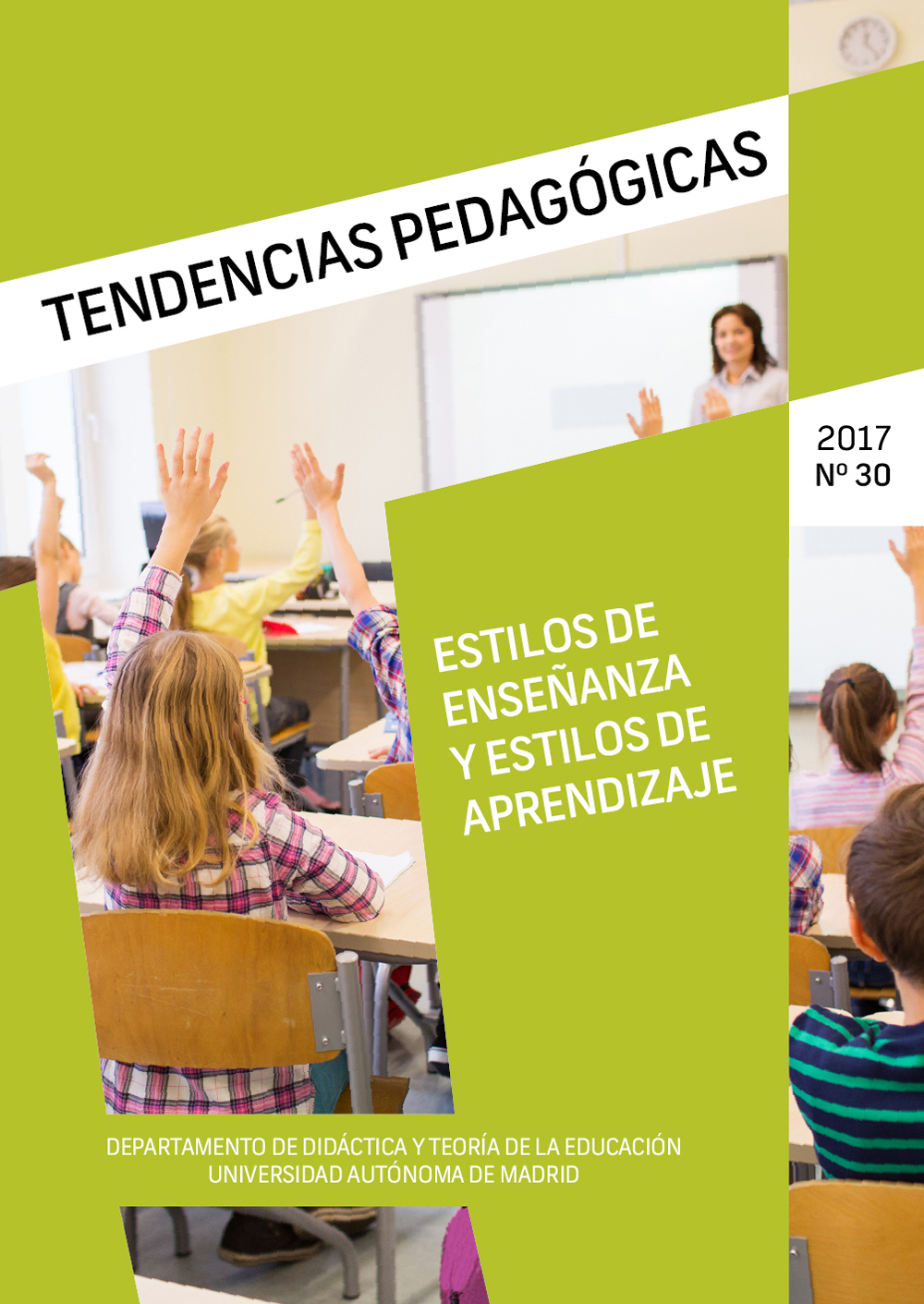Palabras clave:
learning styles, students, accalaureate, Region of Murcia, CHAEAResumen
El objetivo general que se plantea en esta investigación ha sido verificar las posibles diferencias entre los diferentes estilos de aprendizaje, en cada una de las modalidades de Bachillerato, en función del sexo y del tipo de centro educativo. Para ello se ha llevado a cabo un estudio descriptivo y relacional, desde un enfoque metodológico cuantitativo y transversal. El muestreo ha sido incidental, participando 823 alumnos distribuidos en 5 de los 13 institutos de Educación Secundaria de Murcia capital, 2 centros concertados de la ciudad que imparten Bachillerato y 7 centros de Bachillerato de las localidades de Alcantarilla, Alhama, Ceutí y Molina de Segura de la Región de Murcia. El cuestionario aplicado ha sido el CHAEA (Alonso, 1992). Entre los resultados obtenidos destacar que el estilo predominante es el reflexivo, y que los estilos de aprendizaje reflexivo y teórico son los que priman en las modalidades de Bachillerato Tecnológico y Ciencias de la Naturaleza y de la Salud, y los estilos de aprendizaje activo y pragmático en las modalidades de Arte y Humanidades y Ciencias Sociales. Entre las conclusiones destacar la necesidad de continuar promoviendo propuestas pedagógicas que tengan en cuenta las preferencias de los estilos de aprendizaje para modularlos en función de las necesidades educativas y profesionales.Descargas
Citas
Adán, M.I. (2008). Los estilos de aprendizaje en la orientación y tutoría de bachillerato. Revista Complutense de Educación, 19(1), 59-76. Recuperado de http://revistas.ucm.es/index.php/RCED/article/view/16403
Aldajah, S., Haik, Y. y Moustafa, K. (2014). Compatibility of teaching styles with learning styles: a case study. European Journal of Educational Sciences, 1(1), 50-58. Recuperado de http://ejes.eu/wp-content/uploads/2016/01/6.pdf https://doi.org/10.19044/ejes.v1no1a6
Alonso, C.M. (1992). Estilos de aprendizaje: Análisis y diagnóstico en estudiantes universitarios. Tesis doctoral. Madrid: UCM.
Alonso, C.M., Gallego, D.J. y Honey, P. (1994). Los estilos de aprendizaje. Procedimientos de diagnóstico y mejora. Bilbao: Mensajero.
Ángel, W. (2015). Los estilos de aprendizaje y el trabajo colaborativo en los ambientes virtuales. Tesis doctoral. Madrid: UNED.
Contreras, Y. y Lozano, A. (2012). Aprendizaje auto-regulado como competencia para el aprovechamiento de los estilos de aprendizaje en alumnos de educación superior. Revista Estilos de Aprendizaje, 5(10), 114-127. Recuperado de http://learningstyles.uvu.edu/index.php/jls/article/view/112/75
Curry, L. (1983). An Organization of Learning Styles Theory and Constructs. American Educational Research Association Annual Meeting. Montreal, Canada. Recuperado de https://eric.ed.gov/?id=ED235185
Farfán, S., Gallardo, R., Teran, J. y Alonso, C. (2010). Aplicación de los Estilos de Aprendizaje para la determinación de los grupos de riesgo en la Carrera de Informática de la UMSA. Revista Estilos de Aprendizaje, 3(6), 138-152. Recuperado de http://learningstyles.uvu.edu/index.php/jls/article/view/139/98
García-Cué, J.L. (2013). Estilos de aprendizaje. En J.L. García-Cué, M.A. Jíménez, T. Martínez y C. Sánchez (coords.), Estilos de aprendizaje y otras perspectivas pedagógicas del siglo XXI. México: Colpos.
Keefe, J.W. (1988). Profiling and Utilizing Learning Style. National Association of Secondary School Principals. Virginia: Reston.
Kolb, A.Y. y Kolb, D.A. (2005). The Kolb Learning Style Inventory—Version 3.1. Technical Specifications. Boston: Hay Resources Direct. Recuperado de http://learningfromexperience.com/media/2010/08/Tech_spec_LSI.pdf
Lago, B., Colvin, L., Cacheiro, M.L. (2008). Estilos de aprendizaje y actividades polifásicas: Modelo EAAP. Revista de Estilos de Aprendizaje, 1(2), octubre 2008. Recuperado de http://learningstyles.uvu.edu/index.php/jls/article/view/141
Leiva, J.J. (2017). Estilos de aprendizaje y educación intercultural en la escuela. Tendencias Pedagógicas, 29, 211-228. Recuperado de https://revistas.uam.es/tendenciaspedagogicas/article/view/7091/7466
Luengo, R. y González, J.J. (2005). Relación entre los estilos de aprendizaje, el rendimiento en matemáticas y la elección de asignaturas optativas en alumnos de E.S.O. RELIEVE, 11(2), 147-165. Recuperado de http://www.uv.es/RELIEVE/v11n2/RELIEVEv11n2_4.htm
Reid, J. (1995). Learning Styles: Issues and Answers. En Learning Styles in the ESL/EFL Classroom (pp. 3-34). EEUU: Heinle & Heinle Publishers.
Ros, N. (2015). Estilos de aprendizaje de los alumnos de bachillerato en la Comunidad Autónoma de la Región de Murcia: diagnóstico y propuesta de mejora. Tesis doctoral. Madrid: UNED.
Sagarra, M., Estrada, M. y Monferrer, D. (2015). Estilos de aprendizaje en estudiantes universitarios: lateralización vs. interconexión de los hemisferios cerebrales. Revista Española de Pedagogía, 73(262), 583-600.
Santizo, J.A., García-Cué, J.L. y Gallego, D.J. (2008). Dos métodos para la identificación de diferencias de estilos de aprendizaje entre estudios donde se ha aplicado el CHAEA. Revista de Estilos de Aprendizaje, 1 (1), 28-42. Recuperado de http://learningstyles.uvu.edu/index.php/jls/article/view/75/8
